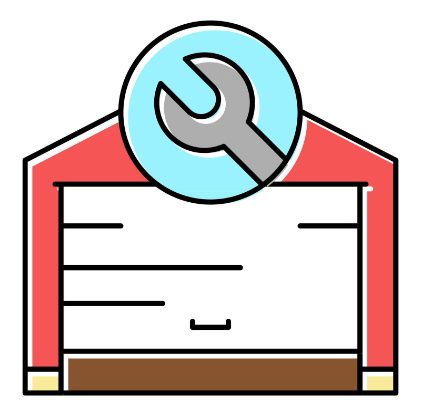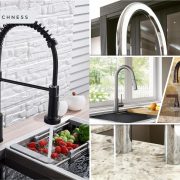Garage doors are an essential part of any home, not only providing security for your vehicles but also enhancing the overall aesthetic appeal of your property. One of the critical components of garage doors is the springs, which ensure smooth and efficient operation. However, these springs can sometimes face issues, leading to difficulties in opening and closing the door. Edmonton Springs Services is one such example that highlights the importance of properly functioning garage door springs. In this article, we will explore the common problems associated with garage door springs and offer some practical solutions to fix them, all the while maintaining the charm of your home’s exterior.
1. Broken Garage Door Springs
One of the most common issues with garage door springs is that they can break, causing the door to become inoperable. This problem is usually due to wear and tear or poor maintenance. To fix a broken spring, you will need to replace it with a new one. It is highly recommended that you hire a professional to do this job, as it can be dangerous to attempt on your own. Also, remember to choose springs that match the design and color of your garage door to maintain the overall look of your home.
2. Rust and Corrosion
Garage door springs are susceptible to rust and corrosion, which can weaken the metal and lead to breakage or malfunction. To prevent this issue, regularly inspect your garage door springs for any signs of rust. If you spot any, you can apply a silicone-based lubricant or rust inhibitor to keep the springs in good shape. Additionally, ensure that your garage has proper ventilation to reduce humidity levels and prevent rust formation. Maintaining the pristine appearance of your garage door springs will contribute to the overall beauty of your home.
3. Imbalanced Springs
Imbalanced springs occur when one spring is tighter than the other, causing uneven pressure on the garage door. This issue can lead to difficulty in opening and closing the door, as well as increased wear and tear on the door’s other components. To fix this problem, you will need to adjust the tension on the springs until they are balanced. This task can be challenging and risky, so it is best to consult a professional to ensure the safety and longevity of your garage door.
4. Loose or Damaged Hardware
The hardware that holds the garage door springs in place can become loose or damaged over time. If you notice any loose bolts, screws, or brackets, tighten them using the appropriate tools. However, if the hardware is damaged or severely corroded, consider replacing it with new, rust-resistant components. Matching the hardware’s finish to the existing elements of your garage door will ensure a cohesive and attractive appearance.
5. Incorrectly Installed Springs
If your garage door springs were not installed correctly, they might not function as intended, causing your door to operate poorly or not at all. In this case, it is crucial to have a professional assess the installation and make any necessary adjustments or replacements. Properly installed springs will not only ensure the smooth operation of your garage door but also contribute to its overall aesthetic appeal.
6. Insufficient Lubrication
Like any other mechanical component, garage door springs require regular lubrication to function smoothly and prevent excessive wear. If you notice any squeaking or grinding noises when operating your garage door, it may be due to insufficient lubrication. Apply a silicone-based garage door lubricant to the springs to reduce friction and improve their performance. Regular maintenance will prolong the life of your garage door springs and maintain the overall charm of your home.
Conclusion
Garage door springs play a vital role in the functionality and appearance of your home. By addressing common issues such as broken springs, rust, imbalance, loose hardware, incorrect installation, and insufficient lubrication, you can keep your garage door




















